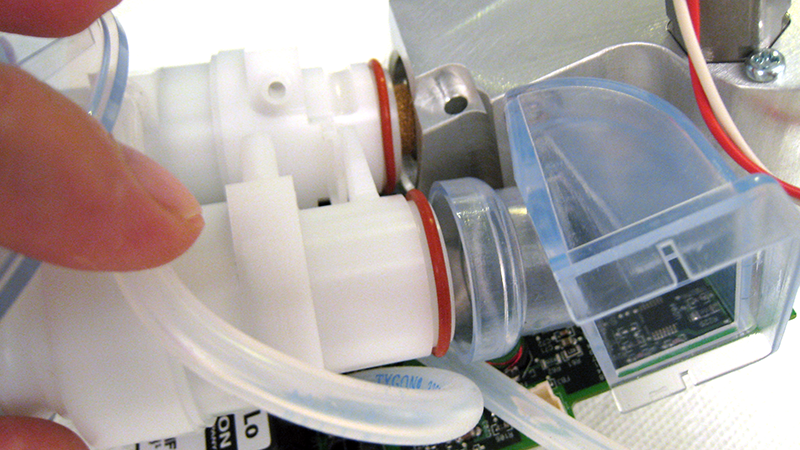
How do you design a quiet oxygen blender small enough to fit inside a remarkably compact, new portable ventilator? That was the challenge given to our team by Philips. Our work included mechanical and electrical engineering, and the blender's industrial design.
This new volume and pressure-control ventilator, "Trilogy" is used for critical care invasive and noninvasive ventilation. Due to its smaller size and lighter weight, it allows for greater freedom of movement in the hospital. Trilogy's oxygen blender measures airflow and regulates oxygen delivery to ensure a constant oxygen-to-room-air ratio, preventing oxygen levels from spiking or dipping as the patient's respiration changes, thus, better fulfilling physician's orders. The oxygen blender presented several challenges that we successfully met. The first was to create a blender that would fit in the ventilator's reduced volume. Using 3D-printed rapid prototypes, our team was able to quickly create full-scale models for evaluation against assembly and engineering constraints. Noise reduction was another challenge for this design. Ventilators use high-performance motors that generate high noise levels. This challenge was met in part by using a whisper cap and by orienting the air inlet - and the noise - away from the patient. The final challenge was designing the oxygen inlet valve. In the United States standard connectors with different sizes are used for medical gases to prevent the accidental introduction of gases other than oxygen into the ventilator. Since standards vary in other countries where Trilogy may be used, the oxygen inlet needed to be interchangeable. In addition to designing and developing the oxygen blender, we paid close attention to the characterization, or testing, of the system, from the individual parts to the subsystems to the system as a whole. We also provided manufacturing liaison services for the oxygen blender, including inspection of production assembly fixtures and development of leak test procedures.